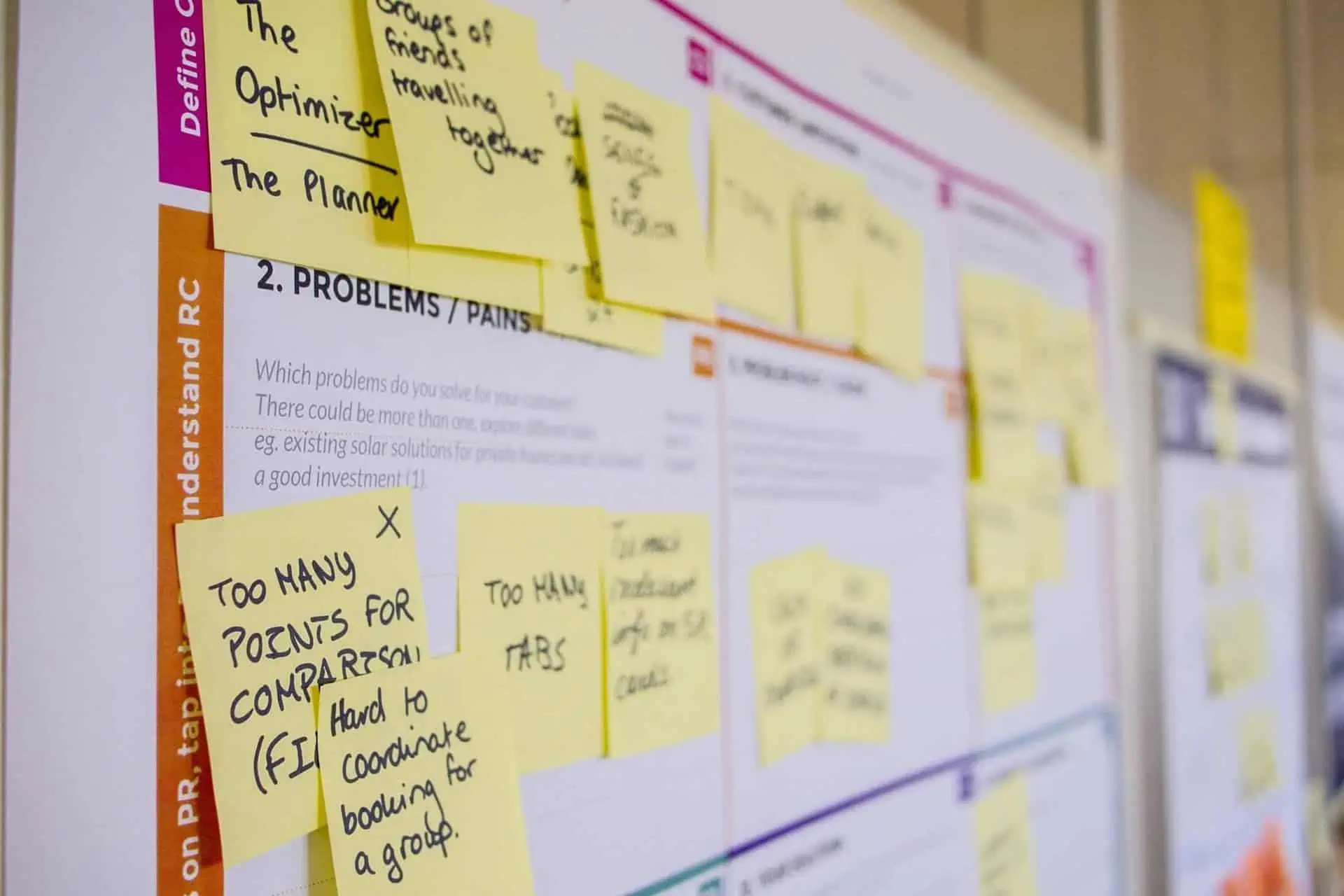Updated on 3rd of February.
There are various types of business models practised by businesses today. A quick overview of what is a business model, to begin with.
A business model is the first step, an idea and a concept at basically how your business will run its course and make money. A business model is an outline of how a company plans to make money with its product and customer base in a specific market. At its core, a business model explains four things:
- What product or service a company will sell
- How it intends to market that product or service
- What kind of expenses it will face
- How it expects to turn around profit
There are multiple types of business models that business use to operate and make their revenue. This article will be listing the top most used types of business models as well as identifying the difference between a revenue and a business model. However, the names/terms for the business models may vary from one region to another.
Types of Business Models
This section will be highlighting some of the most commonly used types of business models used today with some examples of companies that are based and running those types of business models successfully. Infographics used below have been credited in the references.
Subscription Model
For this type of model, the customer pays a recurring payment every month (or another specified timeframe) for access to a service or product. A company may directly ship you their product in the mail, or you may pay a fee to use an app. This model is flexible and can be used for a traditional brick and mortar as well as an e-commerce store.
The objective of a subscription business model is to retain customers under a long-term contract and secure recurring revenue from the repeat purchase of a product or service.
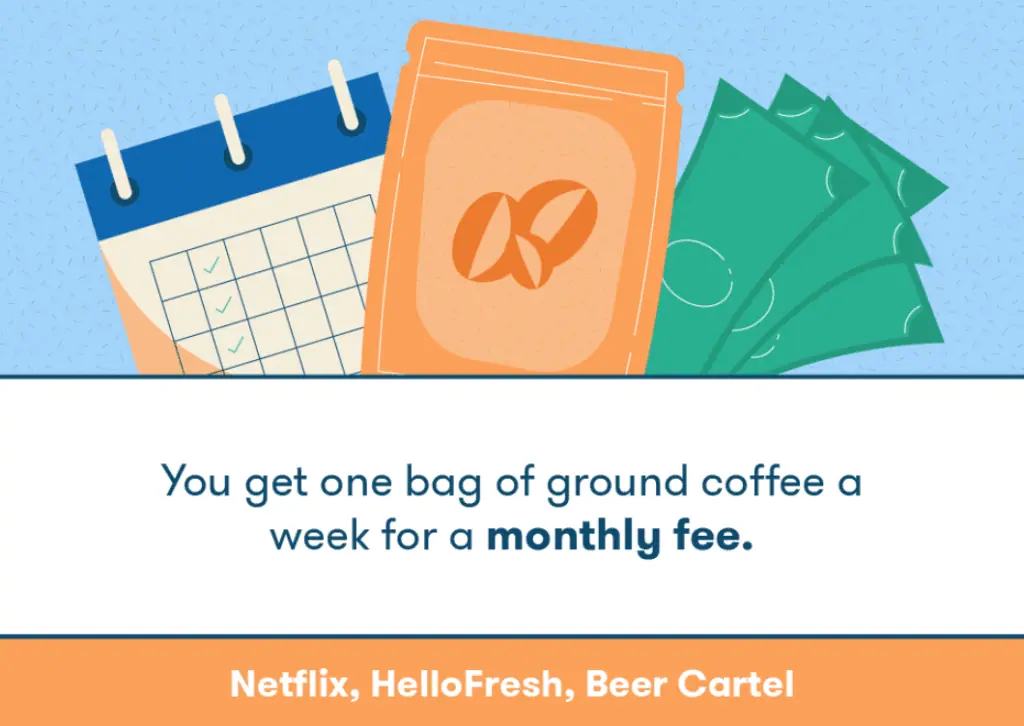
The subscription business model can be seen in various types today. The most popular streaming subscription model can be seen through companies like Spotify and Netflix.
Bundling Model
This is one of the types of business model where companies 'bundle' together one or more similar kind of products together as a single unit, often charging a slightly lower price than if each were bought individually. Bundling is not just limited to individual organizations, as two companies can form a partnership and use a bundling model to deliver complementary products or services.
Examples of this type of a model can be given through Microsoft Office where they bundle there applications together to offer as one package, McDonalds and Burger King offering 'sets' or 'combo' meals combining their burgers with perhaps fried chicken at a lower price than each of those together.

This type of business model allows companies to generate a greater volume of sales and perhaps market products or services that are more difficult to sell. However, profit margins often shrink since businesses sell the products for less. The bundles offered do not always have to be another product, sometimes the element of after-sales support can also be added to the bundle. For example, a consumer gas and electric company may offer an energy thermostat in its energy bundles to help customers save money on their utility bills.
Freemium Model
A mixture of the words "free" and "premium," the term freemium is a type of business model that involves offering customers both complementary and extra-cost services. These types of business models are often associated with online or Software-as-a-Service (SaaS) businesses.
The basic product is available for free. The company generates revenue by offering connected premium product, i.e. additional functions or services which usually attract a small number of users. By giving away the basic product for free it is easier to lure users and create a customer base. This business model pattern is one of the most widely used for Internet start-ups.
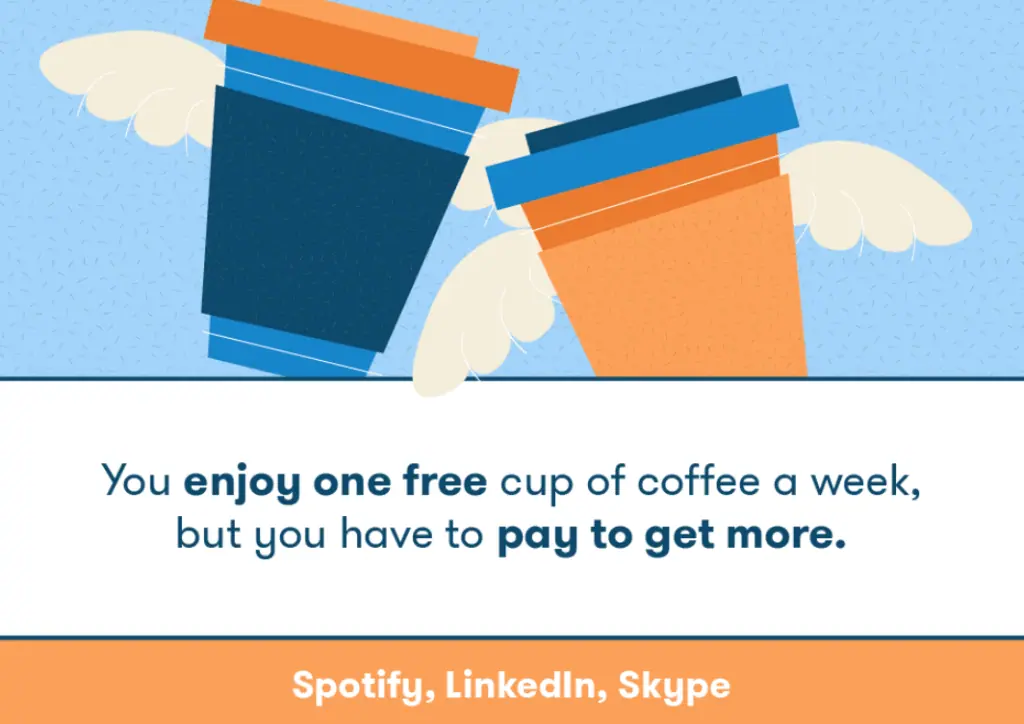
The basic framework goes like this: a software company hosts and provides a proprietary tool for their users to freely access, such as an app or tool suite. However, the company withholds or limits the use of certain key features that, over time, their users will likely want to use more regularly. To gain access to those key features, users must pay for a subscription.
Examples of this type of model include Spotify, LinkedIn and more. You can see how Spotify follows this model —they give their users free and open access to their entire database of music while sprinkling in ads between songs. At some point, many users opt to pay a recurring monthly fee for the premium service so they can stream music without interruption. Same with LinkedIn, the basic features are available free of cost, but if you require more analytics and extra features, LinkedIn Premium is available to purchase for a fee.
The freemium model tends to work well for Internet-based businesses with small customer acquisition costs, but provides a high lifetime value.
Franchise Model
Amongst all other types of business models, the franchise model is perhaps the most widely used and understood. In short, a franchise works as such: A franchise is an established business blueprint that is simply purchased and reproduced by the buyer, the franchisee. The franchiser, or original owner, works with the franchisee to help them with financing, marketing, and other business operations to ensure the business functions as it should. In return, the franchisee pays the franchiser a percentage of the profits.
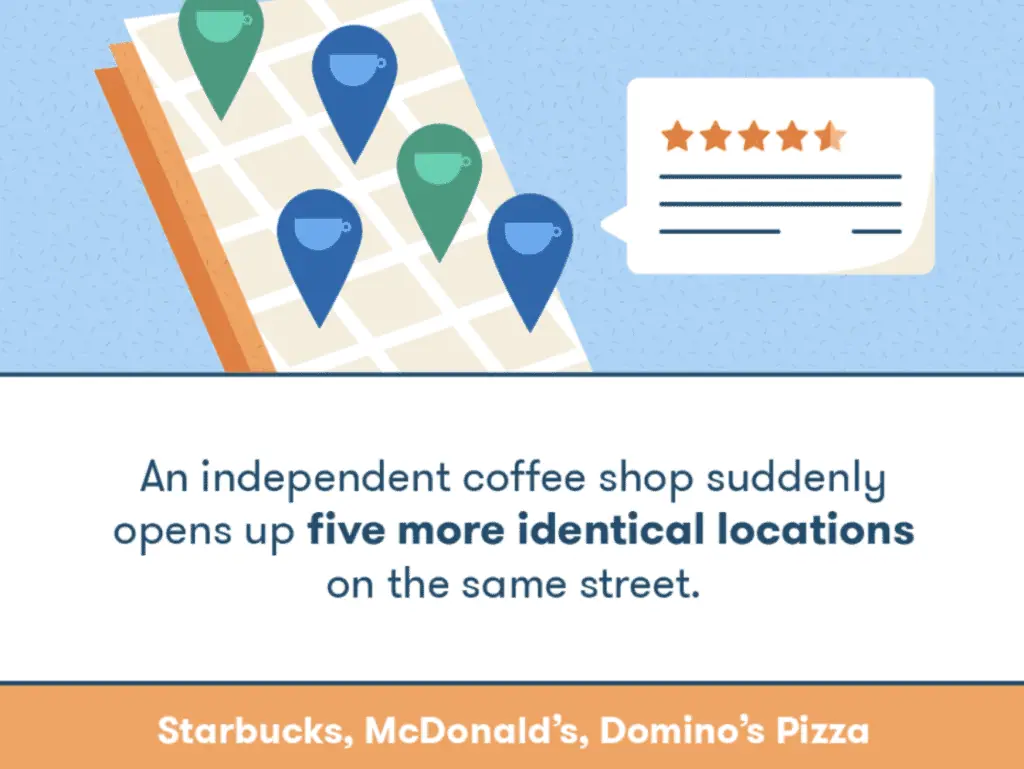
These types of business models are commonly used by companies like Starbucks, McDonald's and fast-growing companies globally. Franchising allows business owners to grow their businesses without having to spend substantial amounts of their own money to build new units. Thus, the risk of possible failure is transferred to the franchisee who is responsible for coming up with the initial capital.
For new business owners with little business experience, franchising gives them a successful business model to follow, which can relieve some of the uncertainty associated with starting a business venture from scratch.
Retail Model
A retailer is the last link in the supply chain. These businesses purchase goods from distributors and then sell them to customers for a price that will both cover expenses and turn a profit. Retailers may specialize in a particular niche, such as kitchenware, or carry a range of products. These types of business models usually apply to large departmental stores that tend to carry their house brand products as well as other brands within as well.
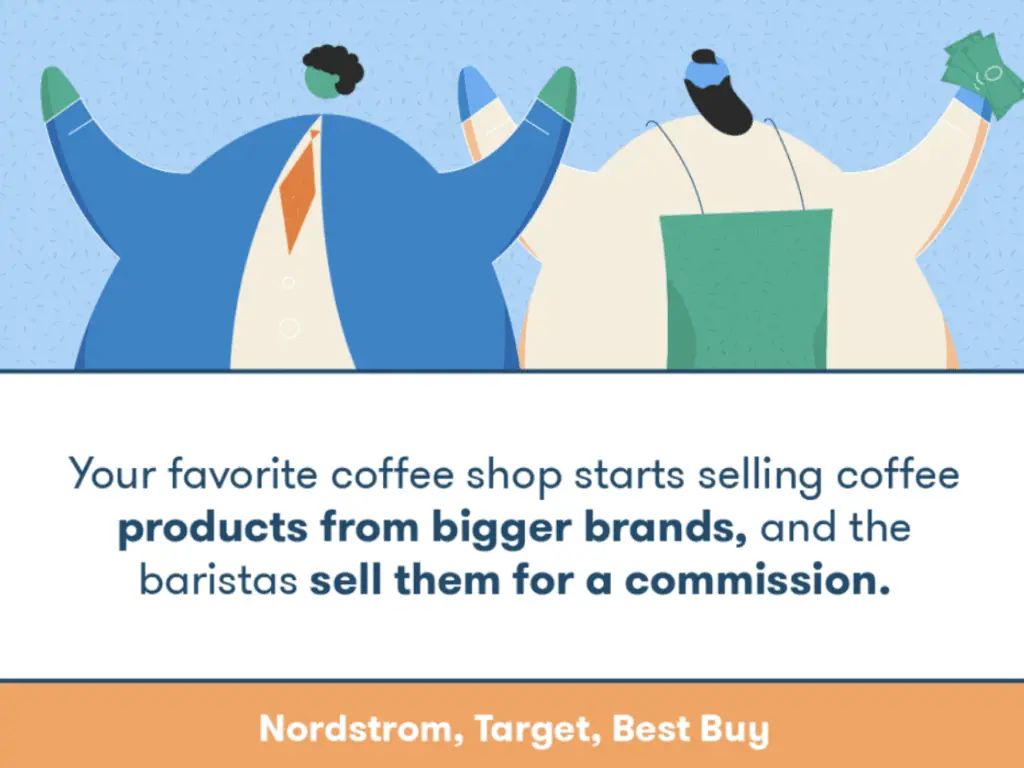
Leasing Model
Under a leasing business model, a company buys a product from a seller. That company then allows another company to use the product they purchased for a periodic fee. Leasing agreements work best with big-ticket items like manufacturing and medical equipment.
Product manufacturers may consider reevaluating their revenue model from a single-transaction sale to a relationship-based service contract. Leasing differs from the pay-per-service unit model in that the customer pays for continuous access to a service over a defined period instead of the number of uses.

An example of these types of business models can be car rental companies like Hertz or Avis. They purchase cars and rent to their direct customers or other companies who prefer to not buy cars for their employees and choose to rent to reduce and minimise costs.
Razor and Blades Model
To understand the razor blades model, you can simply look to your local drugstore. You’ll notice that replacement razor blades cost more than razors themselves. Businesses tend to offer a cheaper razor with the understanding that you’ll continue to purchase more expensive accessories — in this case, razor blades — in the future. For this reason, this model is referred to as the “razor blades model.”
A classic example of this model is Apple iPhones and MacBook's — you purchase the high-margin item, the phone or computer, and then Apple pushes additional products, tools, and services that accompany that item. This is exactly how this business model works: every time you buy the cartridge for your printer or the coffee capsule that fits in your coffee maker, you are participating in this strategy.

In addition to the traditional razor blades model, you’ll also see companies use the reverse razor blades model — in which they offer customers a high-margin product and then promote the sales of lower-margin products that accompany that initial product.
Keurig is a good example of a company that capitalized on this model by preventing competitors from selling complementary products. They held a patent on the K-cup coffee pods until 2012 and, as a result, enjoyed substantial profits and soaring stock prices. However, after the patent expired, competitors flooded the market with their version of the K-cup, eroding Keurig's profits and market share.
Other examples overtime are as below:
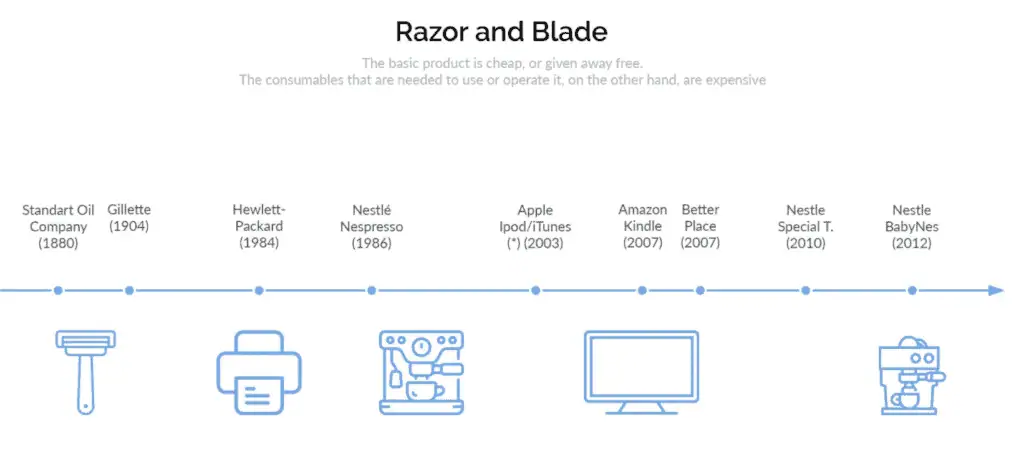
One-for-One Model
As the name suggests, the one-for-one business model means that a company donates one item to a charitable cause for every item that is purchased. This model appeals to the charitable nature and social consciousness of customers to encourage them to purchase a product or service, while also allowing both the business and the customer to actually engage in philanthropic efforts.
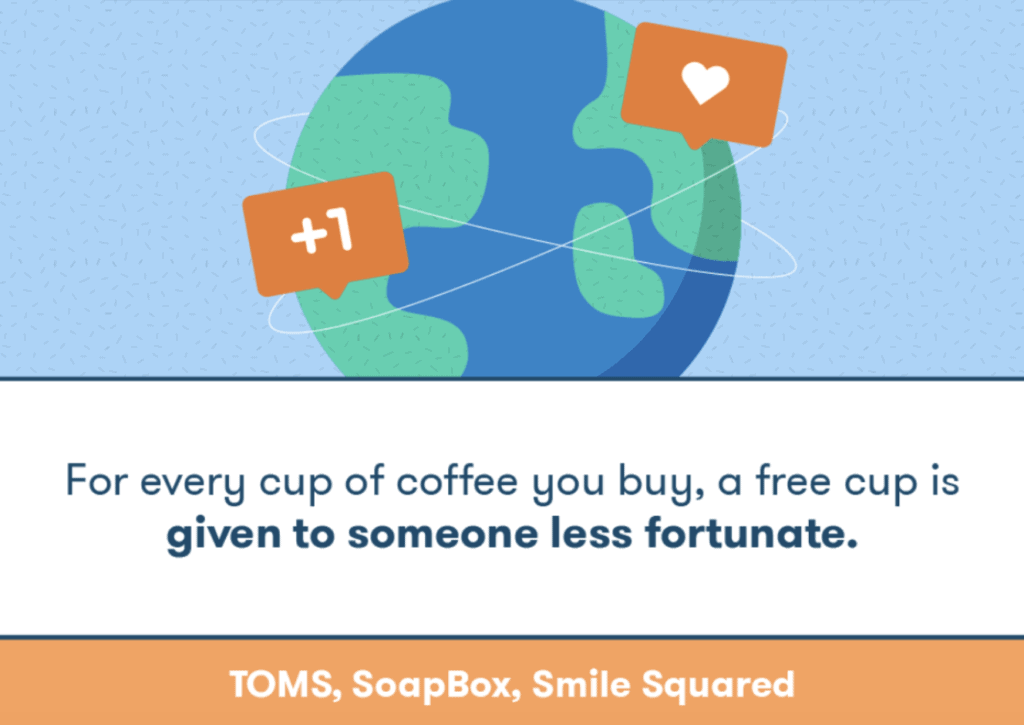
The most popular example of these types of business models would be TOMS. The one-for-one business model has catapulted to prominence since Toms adopted it. Since 2006, Toms has given away more than 35 million pairs of shoes in 60 countries. Scores of similar businesses, selling a wide range of products, have followed suit. Warby Parker sells and distributes eyeglasses; Roma Boots sells and gives away boots; Nouri Bar donates a meal for a child for every nutritional bar it sells; Soapbox donates a month of water, a bar of soap, or a year of vitamins for each soap product it sells, and so on.
Two-Sided Marketplace Model
A two-sided marketplace business model is a platform for economic exchange between two distinct user groups that provide each other with the benefits of a large network. This is one of the types of business model creating a win-win situation for both, the merchant as well as the consumer.
The purpose of a two-sided marketplace platform is to facilitate interaction between buyers and sellers. The two sides of the market can find each other and exchange value on a trustworthy platform, and the platform – typically – charges a commission or another kind of each transaction.
An example of such types of business model can be Uber, discussed in detail in the comparison section below.
Revenue vs. Business Model
The business model describes how a company generates value. The revenue model describes how a company generates revenue from the value it has generated for customers. The revenue model is a vital component of a business model. This is best explained if we use a real-life example, using the example of Uber; we will compare the Uber business model with its revenue model.
Uber Business Model
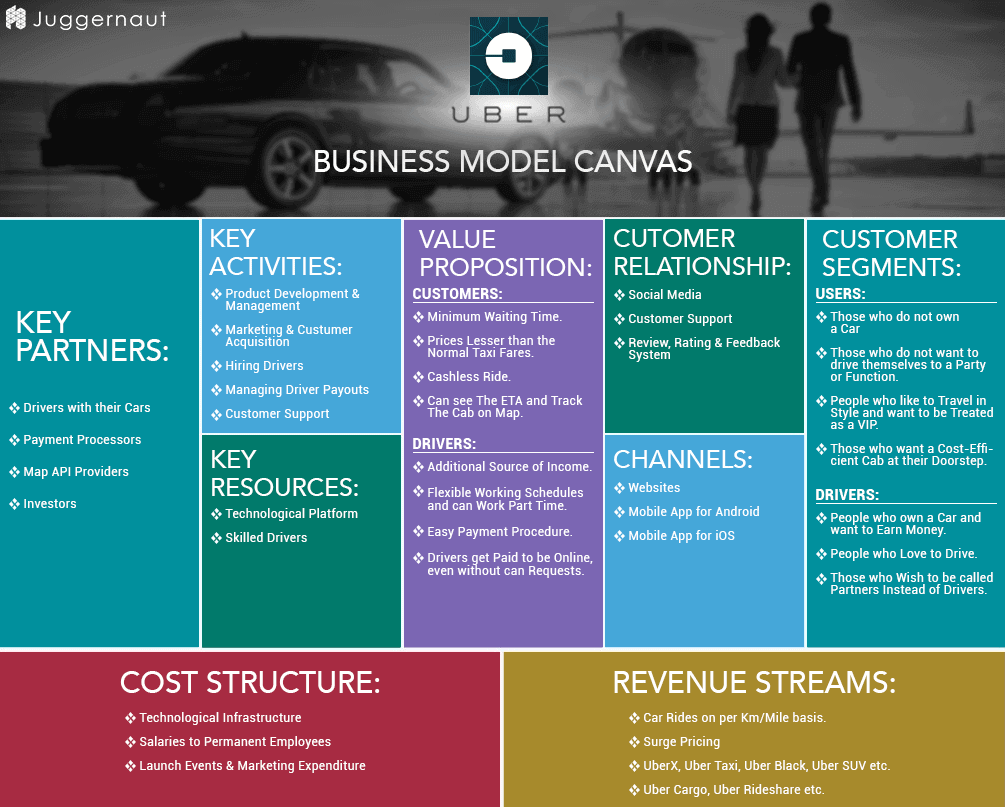
Uber’s Revenue Model – How Uber Makes Money?
Uber’s revenue model is unique in itself as it is based on a variety of factors. It includes the revenue through the customer’s trip commission and the surge pricing, revenue from cancellation of rides and endorsement of other products on the app. However, the principal revenue generation is contributed by 20 % of the customer's fare, while the driver is entitled to the remaining 80%. Furthermore, the details are as follows:
Trip Commissions
Uber keeps 25% of each fare booked through its app, while its rival Lyft takes 20%. However, it is to be noted that Uber sets different rates for every country and cities within. The fares vary according to the immediate demand for rides and the user’s vehicle and service choice.
Surge Pricing
Uber increases the rates based on certain algorithms. This helps Uber to gain extra revenue and make better profits during peak hours and on special occasions. Uber is the winner in the case of a demand-supply mismatch as the higher the demand goes for their bookings, the fares tend to increase.
Premium Rides
Uber started as a simple cab booking business but after its success it increased its offerings and capturing every segment of society that is those riders who want to go places economically and those for whom money is not a big issue and they are willing to shell out extra money and book luxury sedans and sports-utility vehicles(SUV).
Cancellation fee
As per Uber’s policy, if anyone cancels the ride after booking it, he/she has to pay a cancellation fee after a certain period of time.
Leasing to drivers
Uber has a good option for those who are willing to join Uber as drivers but do not have their own car. Uber provides them with an option to lease cars at a minimum lease rate in the market, however, this service may not be available to all countries that Uber operates in.
To Conclude
At the end of the day, there is no perfect way to decide your business model, it entirely depends on the scope of your operations and the costs you may incur along the way.
In addition, it may be helpful to research other businesses that are similar to yours (especially competitors) and see how they’ve structured their operations. This information will be able to inform your business model generation, as well as suggest avenues you can take to differentiate your business from others out there.




